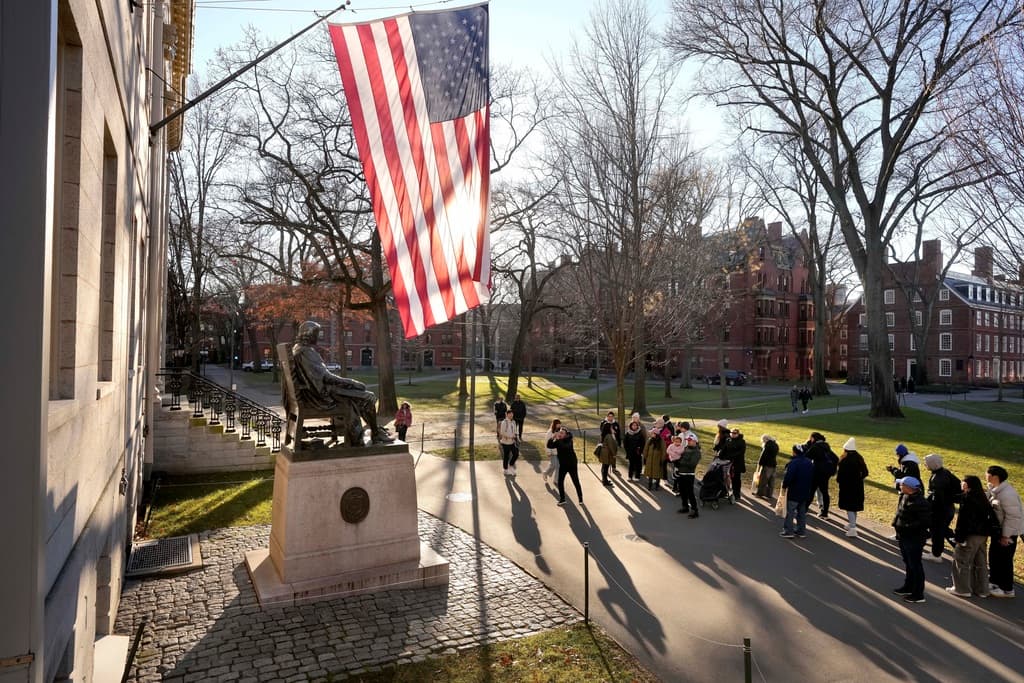Harvard Gets Its Dander Up
America’s oldest university says it will refuse to comply with America’s demands on diversity, equity, and inclusion.

The decision by Harvard University, announced today, that it will refuse to comply with the American government on diversity and related issues strikes us as an error in judgment. It sets up what could be a new round of lawsuits less than two years after it was humiliated by the Supreme Court in respect of the case known as Students for Fair Admissions v. Harvard. After years in court, Harvard lost that landmark by a vote of six to two.
What Harvard is now going to fight is a demand by the American government that, according to the Crimson newspaper, it dismantle its diversity programming and limit student protests in exchange for its federal funding. That runs to something on the order of 9 billion spondulix over several years. Forgive the slang — it’s $9 billion at stake in funding over Harvard writ large, including teaching hospitals.
The announcement by Harvard that it would fight the government was made by the university’s president, Alan Garber. “No government — regardless of which party is in power — should dictate what private universities can teach, whom they can admit and hire, and which areas of study and inquiry they can pursue,” President Garber protested. Yet at least part of that statement is 180 degrees crosswise with the law articulated by the Supreme Court.
“Eliminating racial discrimination,” the Chief Justice of the United States wrote, “means eliminating all of it. And the Equal Protection Clause, we have accordingly held, applies ‘without regard to any differences of race, of color, or of nationality—it is ‘universal in [its] application.’” So it looks like, for starters, the Supreme Court seems to think the government might have something to do with whom Harvard can admit.
We don’t intend to suggest that Harvard is completely without merit on any of its objections to America’s latest demands. It may have some wiggle room, or more, as to, say, what it can teach, though the courts might find otherwise if the Feds are funding a course or research. It might have some say — we can imagine — about which areas of study and inquiry its scholars can pursue, particularly, again, if the government is paying.
On these questions, the university — and the government — could find that Harvard has Supreme Court precedent on its side. In Rust v. Sullivan, the Nine in 1991 found that the federal government is limited in its “ability to control speech” at Universities “by means of conditions attached to the expenditure of Government funds,” as Chief Justice Rehnquist put it. That was “restricted by the vagueness and overbreadth doctrines of the First Amendment.”
Rehnquist saw this limit as a reflection of the university’s role as “a traditional sphere of free expression” that is “fundamental to the functioning of our society.” Earlier disputes, too, suggest boundaries on government’s ability to dictate instructional policies on campuses, Georgetown Law’s David Cole reports. In 1957, the high court ruled that the First Amendment barred New Hampshire from firing a communist on the faculty of a state university.
Chief Justice Warren, in the high court’s opinion in Sweezy v. New Hampshire, warned against “any strait jacket upon the intellectual leaders in our colleges and universities.” In a case in 1967, the Nine barred New York from deploying a law that sought to prevent “subversives” from teaching at state universities. The high court, in Justice William Brennan’s opinion, called “academic freedom” a “special concern of the First Amendment.”
Today, though, where is the line between preserving the First Amendment rights of faculty and students on campuses and the need to protect the safety and civil rights of, say, the Jewish students who report that they have faced threats, hostility, and discrimination at Harvard and an anti-Israel bent among the activists on the faculty and in the administration? This could prove to be a question if Harvard’s latest fight ends up in court.

